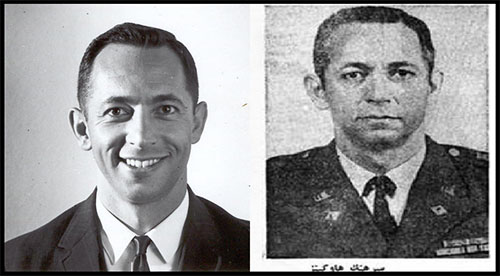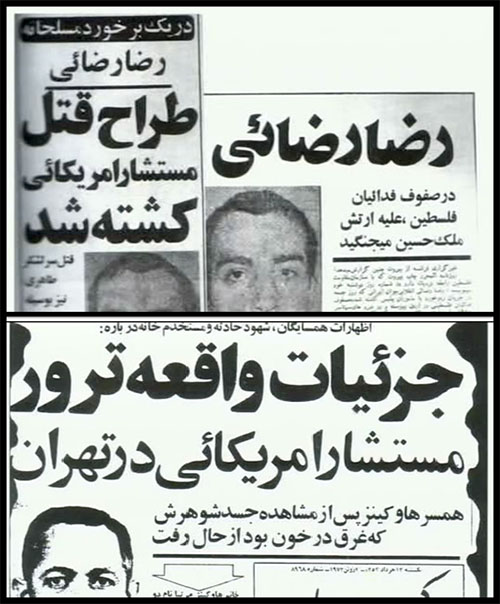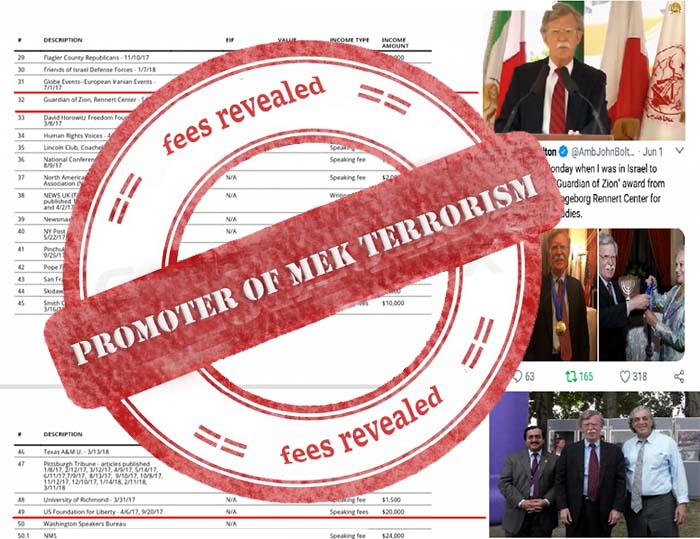Identifying the Experts of Secret Mission
In the midst of the attacks that SAVAK brought to Marxist armed groups in the spring and summer of 1976, including the active elements of the MKO, they got killed or arrested, the MKO’s leadership decided to take a dramatic and effective military action.


The analysis of the leaders of the organization was based on the fact that after the deadly attacks to the MKO, and the Fadaian1, they had to – in the first place – express their effective existence, and, secondly, – put the Pahlavi regime in a complex array of armed movements .
Along with this matter, at last, the assassination of three American advisers in Iran was designed and carried out by Mojahedin. These advisers were experts in the field of electronic equipment that led the installation and operation of complex eavesdropping systems in the form of a series of designs in ((Kabkan)), that is located on the border between Iran and the Soviet Union. According to the available information, the basic information about these three spies was most likely transmitted to the Mojahedin by the Soviet government2.

The Process of Assassinations
During the identification operations to carry out assassinations, the exact route of the car movement got identified. According to information obtained from the operational units of the organization, they traversed Tehranpars (the intersection of Damavand Avenue, known as the Tehran-Pars three ways) every morning between 7:00 and 7:20 minutes, and near the intersection of Narmak thirty meters, passing from Khayyam avenue (one of the neighboring streets of Vosuq Square). Therefore, it was decided that the MKO’s operational layout be arranged in this area and at a specific point on Khayyam Street.
According to the plan, a Volkswagen truck was used for traffic jams and one more car to escape. Additionally, the weapons gathered in compare with the individuals presented on the operation. This terrorist operation is described by Abedini as follows:
“Operation Day”, [1976/08/28] all work was done in accordance with the schedule. The driver of the motorcycle and the person who was with him were marked with a positive signal. The team got ready. Attack layout was done. The car was turned by the driver who should make the traffic, a few moments later the car carrying the advisors appeared on the street, and the driver stopped the car. The driver of the advisers felt that something is going on and turned the steering wheel to his right, but because of the narrow street he couldn’t do anything and the way got closed.
Commander surrendered the driver and made him to put his head under the dashboard then the machine gunner shot the bullets toward Americans. The front man (Robert Krongard) committed to run away after being hit, he came out of the car and went toward the side walk but machine gunner followed him and while he fell into the gutter, finished him. Meanwhile the driver who should make traffic, should get out and support the machine gunners and should stand beside them while machine gunner can dead shot the two Americans behind, and again give the machinegun to the traffic driver and ran toward the scape car. This part of the operation, that was the main part, was done completely (except two parts) and car moved in the identified way. After a distance one of the members got out and removed the fake car number and again continued to move. After a while two members got out and the driver went to Khorasan square with scape car, while the bags of the advisors were also in the car. He put the scape car in one of the alleys of Khorasan square and transferred the equipment to another car, which had already been put there, and move the new car to the base, where the equipment had to be taken there. And in this way the operation ended.3”

Members of the operation team of assassination of three advisors are:
Hosein SiyahKolah (Kazem) the commander of the operation;
Mehdi Fathi (Vahid) deputy commander and in fact executive commander of the scene of operation; (the first machine gunner)
Mohsen Tarighat (Mahmoud) the second machine gunner
Ghasem Abedini (Asgar)traffic driver and driver of scape car
Shahram Mohammadian Bajgiran (Javad) motor driver and marker
Gholamhosein Sahebekhtiari (shamsollah-Asghar) the motor cyclist and marker4
From the very next day, the details and descriptions of this assassination, with more details of the victims (with an emphasis on their military identity), were published in newspapers and it was announced that the American bodies were transferred to California.5
Quality of operation
One of the differences between this assassination and other terror operations of the Mujahedin organization was that it was used handy machineguns for killing the targets this time. Other assassinations – generally – were carried with pistols, and the reason was clear: having large machineguns was in contradiction with the security and destroys the security of the team. But in this particular case, the use of Kalashnikov’s machinegun was on the agenda. Typically, machineguns were used to defend team houses, but Fadaian guerrillas used it in operations, but smaller and lighter ones, such as the ((Shi)) machine gun, which made by France.
SAVAK review results
One of SAVAK’s first reports about the assassination of three advisors of IBEX was as follows:
“As mentioned before, on the 7 o’clock of 1976/08/28, 6 members of the Mojahedin-e-Khalq group (Islamic Marxist) blocked the way with a Volkswagen of the three American citizens residing in Tehran with the name of ((Robert Krongard, William Cotrell and Donald Smith)) that cooperating with Iran Imperial Air Force while transferring to their work place and killed three of them with machinegun and pistol and left their car and ran from the crime scene. Investigation done regarding the terror of three mentioned advisors shows that the executive members of this terror had enough intelligence of their status and jobs. With the regard that the parts that military and nonmilitary American advisors were doing their services were always on special interest of members of intelligence services of Soviet Union and mentioned three advisors were working in a sector that has high sensitivity, this is concluded that the mentioned information and identification have done by members of the Soviet Union intelligence service.6”
Source: MKO organization: Founding till the end (1965-2005), Second volume, In an effort by a team of researchers, the Institute of Political Studies and Research publication


